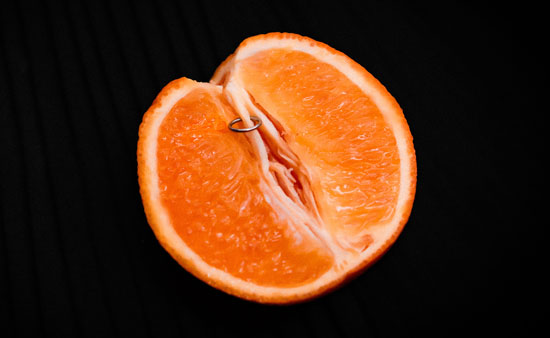A Full Guide To Labia Piercings

Labia piercing, also known as vaginal piercing is a type of body piercing that involves inserting jewelry through the labia, which are the folds of skin surrounding the vagina. It's important to note that labia piercings are a highly intimate and personal choice, and it's crucial to approach them with proper consideration and care. Here are some important points to keep in mind:
1. Professional Piercer:
Choose a reputable and experienced professional piercer who specializes in genital piercings. Ensure they have a clean and safe environment and follow strict hygiene and sterilization practices. It's important to have open and honest communication with your piercer to discuss your specific desires and concerns.
2. Healing Time:
Healing time for labia piercings can vary but typically ranges from 4 to 8 weeks or longer. During the healing process, it's crucial to follow proper aftercare instructions provided by your piercer, such as cleaning the piercing with a saline solution and avoiding sexual activity or trauma to the area.
3. Pain and Sensitivity:
Labia piercings can be painful during the piercing process and may cause temporary sensitivity, tenderness, and discomfort afterward. The level of pain varies for each individual. It's recommended to discuss pain management options with your piercer, such as local anesthesia or pain relief medication if necessary.
4. Infection and Complications:
Like any piercing, there is a risk of infection and complications with labia piercings. Proper aftercare, including keeping the area clean and avoiding irritants or contaminants, is essential to minimize these risks. If you experience any signs of infection, such as increased redness, swelling, discharge, or persistent pain, seek medical attention promptly.
5. Sexual Activity and Comfort:
Labia piercings can potentially enhance sexual pleasure for some individuals, but it's essential to be mindful of your own comfort and the comfort of your partner(s). Communicate openly and honestly about your desires and concerns with your partner(s) and ensure that any sexual activities are consensual, safe, and enjoyable for all involved.
6. Jewelry Selection:
Choose jewelry specifically designed for labia piercings, made from hypoallergenic materials such as surgical stainless steel or titanium. Ensure that the jewelry is the appropriate size and style for your specific piercing and that it offers comfort and ease of movement.
7. Personal Considerations:
It's important to reflect on your own motivations, preferences, and comfort levels before getting a labia piercing. Take the time to educate yourself about the piercing process, potential risks, and aftercare requirements. Consider your own body anatomy and how it may affect the placement and healing of the piercing.
Remember, labia piercings are a personal and intimate choice, and it's crucial to make an informed decision. Engage in open and honest conversations with a professional piercer who can provide personalized advice, address any concerns you may have, and guide you through the process.
 Friendship Day
Friendship Day Good Morning
Good Morning